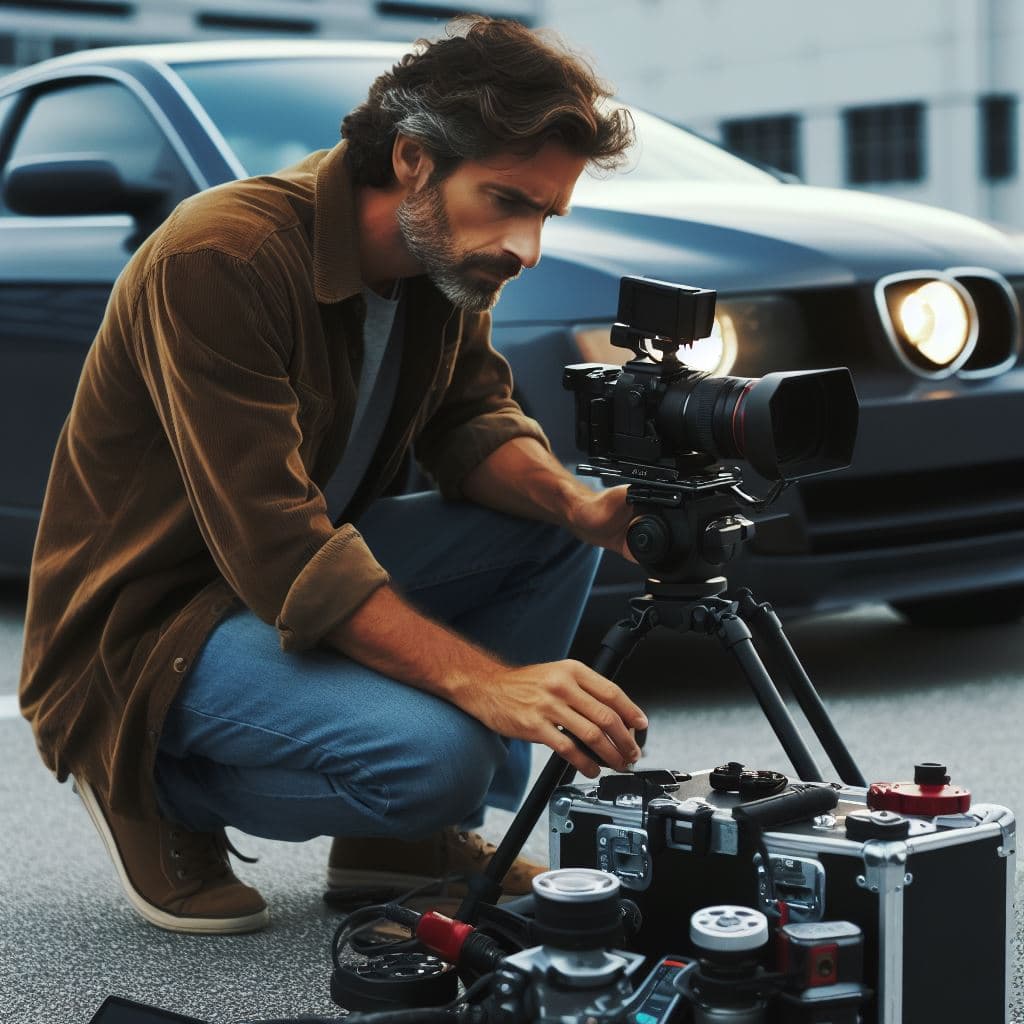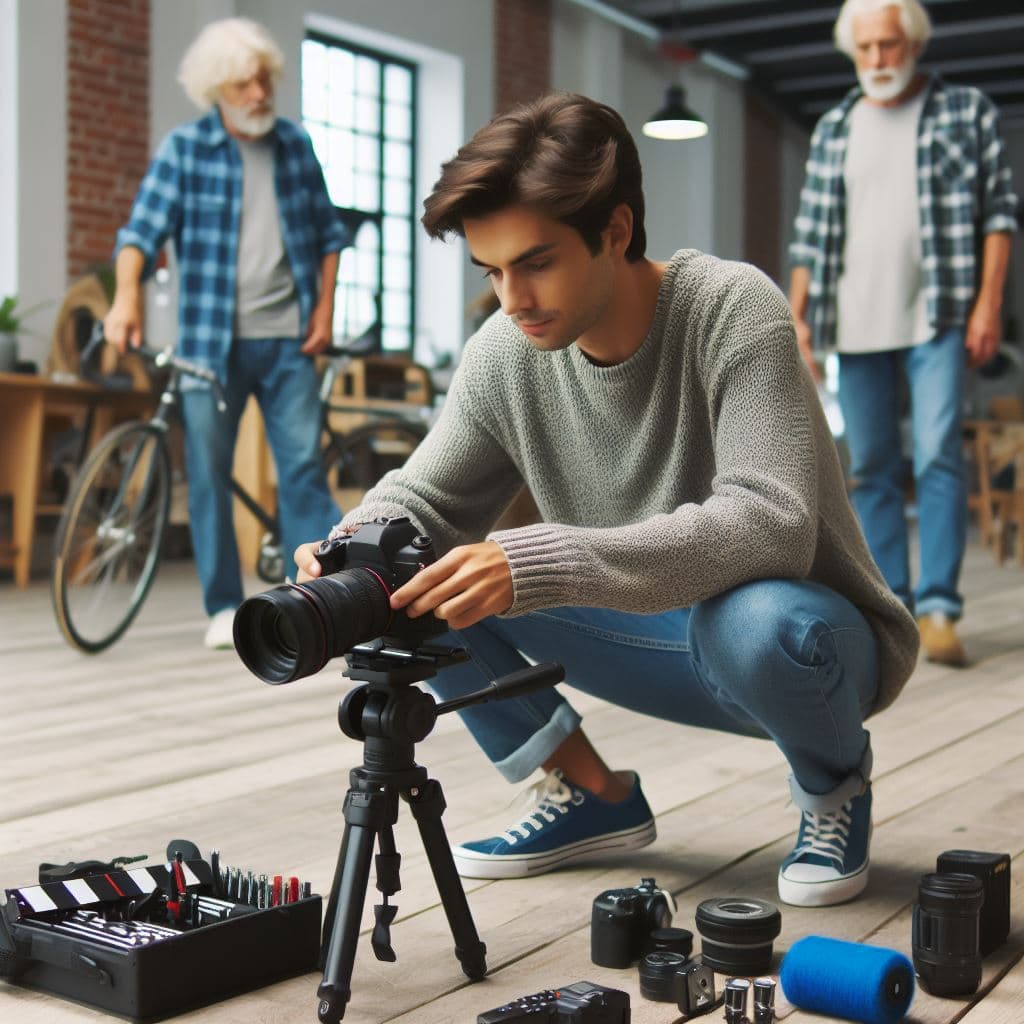How to Make a Short Film by Yourself: An Introduction to Solo Filmmaking
Have you ever had a cinematic story burning inside you just waiting to be told? Perhaps you’ve dreamed of creating your own mini masterpiece but were held back by limitations like budget, crew size or equipment access. Well, fear not aspiring auteur, for this guide will show you that with some creativity and hard work, producing your own short film as a solo filmmaker is entirely possible.
From conception to completion, I’ll outline the entire process in a way that is accessible to anyone regardless of experience level or resources. By the end, you’ll be fully equipped to transform that vision in your head into a reality that audiences can enjoy. So let’s get started on your cinematic journey!
Developing Your Story
The first step towards making your short film dreams come true is having a compelling narrative to bring to life. Take some time to brainstorm story ideas that excite you and fit within the short form constraints. Once you’ve landed on a concept, it’s time to flesh it out into a full script.
While writing solo may feel daunting, it allows you full creative control from the start. Aim to keep things simple yet engaging, leaving room for exploration within your limitations. Don’t stress perfection here – just get the basic plot, characters, dialogue and scene structure down on the page to use as a blueprint. You can always refine later.
With script in hand, it’s a good idea to create a shooting schedule and storyboards mapping out your visual plan. This pre-production stage is when the real groundwork gets laid to help everything come together seamlessly on set. Break scenes into shots and work through any logistical challenges in advance.
Gearing Up For Production

Now that you have a solid game plan, it’s time to start acquiring the tools and assets needed to bring your production to life. While expensive cinema cameras may be out of reach, there are many affordable options that can deliver stunning quality. Consider renting equipment if your budget is tight.
For audio, lavalier mics are great for capturing dialogue on a low budget, or a portable field recorder can handle both sound and video. Lighting is also essential – work with available natural light as much as possible, and supplement with inexpensive LED panels if scenes demand it.
Don’t forget about locations – scout accessible places that suit your story and allow solo filming. Permits may be needed for certain public areas too. You’ll also need basic production materials like clapperboards, batteries, memory cards, and backup drives to organize your shoot.
Assembling Your Crew
Even if it’s just you behind the camera, a few extra hands make the process much smoother. Reach out to willing friends and offer snacks or other perks in exchange for their time. Common one-person crew roles include:
- Assistant Camera/Grip – operates lighting and supports camera movements
- Sound Recordist – handles boom mic and ensures clean audio
- Production Assistant – helps with misc. on-set tasks like craft services
For actors, utilize your network and post online casting calls. Provide sides from your script in advance so performances shine on shoot days. Make sure all crew and talent understand the low-budget nature and sign appropriate releases.
Shooting for Success
Once pre-production is wrapped, it’s time to start rolling! To maximize your limited time, come prepared with charged equipment, backup plans for all elements, and a well-organized shot list to keep things moving.
Some solo shooting tips:
- Mount camera on a tripod for stable shots
- Slate each take clearly for syncing in editing
- Get multiple angles including close-ups and coverage
- Monitor audio levels closely for clean recordings
- Maintain continuity across scenes and takes
- Stay hydrated and fed to power through long days
Be flexible and don’t stress perfection. The goal is just to capture your story – refinements come later. Wrap when confident you have what’s needed to tell the tale in post. Then it’s time to celebrate a job well done before moving to the next phase!
Editing Your Masterpiece
All that footage you collected is now raw material waiting to be transformed. Set up an organized project in your video editing software of choice. Start with an assembly cut, then refine the storytelling, pacing, and overall polish.
Audio sweetening like noise removal and level-balancing is important for a clean finished product. Color correction can enhance the visual tone as well. Finally, lay in titles, credits and any additional creative elements.
When fully satisfied, render and export your short film masterpiece. You’ve now got a cinematic story brought to life entirely by your own vision and effort – quite an accomplishment for any filmmaker! But the journey isn’t over yet. Your film now needs an audience…
Sharing Your Work With the World
Getting eyeballs on your solo short is the perfect way to not only showcase your talents, but also start building an audience and network within the industry. Consider these distribution strategies:
- Upload to video platforms like YouTube and Vimeo for easy sharing
- Submit to targeted film festivals both large and small
- Reach out to local media, critics, and film communities
- Share on social media and contact film blogs or websites
- Screen at local theaters, events or film series if possible
- Brand yourself online and continue creating more content
With some promotion, who knows – your short film could end up being a breakout success, launching your career as an independent filmmaker. But regardless of the response, you’ll have learned so much through the process of bringing your vision to life alone. Use these lessons to continuously grow as a storyteller.
Advanced Solo Filmmaking Techniques

Pre-Production Planning
Now that you’ve got the basics down, it’s time to uplevel your one-person filmmaking skills. Advanced pre-production is key for complex shoots.
- Storyboard intricately composed shots and scenes
- Scout multiple filming locations to allow flexibility
- Create shot lists with camera, lighting and audio notes
- Develop character backgrounds and rehearse actors
- Plan complex rigging, dolly moves or tracking shots
- Schedule around weather, permits and talent availability
Thorough planning will make ambitious visions achievable alone. Don’t be afraid to dream big!
Creative Camerawork
Solo operators must get inventive with camera movements. Rig your camera to:
- Slide smoothly on a Filmcity slider or glidecam
- Achieve crane shots using a portable jib arm
- Capture steady tracking shots with a camera dolly
- Mount to a drone for aerial perspectives
- Attach to a body rig or steadicam for dynamic handheld shots
Experiment fearlessly and your films will take on a cinematic flair.
Advanced Lighting Techniques
For natural-looking illumination, consider:
- Bouncing flashlights or work lights off ceilings and walls
- Using reflector boards to shape hard shadows
- Placing LED panels behind diffusion for soft sources
- Mounting continuous lights to stands for moving shots
- Adding gels and diffusers for warm or cool colored tones
Proper lighting makes or breaks production value. Invest time perfecting your craft.
Robust Audio Solutions
Clean audio is table stakes. Go above with:
- Ambient mics like the Sound Devices MixPre to capture environments
- Wireless lavalier systems like the RODE Wireless Go II for talent freedom
- Portable field mixers like the Zoom F6 for enhanced controls
- Boom poles and stands for precise mic placement over actors
Quality audio gear pays off in post. Layer tracks for a cinematic soundscape.
Advanced Editing Techniques
Elevate the post-production process:
- Employ dynamic editing with jump cuts, flashbacks and montages
- Use split screens, picture-in-picture or green screen effects
- Add motion graphics, titles and lower thirds in Premiere Pro or After Effects
- Apply LUTs and advanced color grading workflows in DaVinci Resolve
- Mix and sweeten 5.1 surround sound mixes in Pro Tools
Polished post-production takes films to a professional cinematic level.
By continuously growing your skills, the possibilities are endless for solo filmmakers. Keep honing your craft – your most epic works are still ahead!
Frequently Asked Questions

General Solo Filmmaking
Q: How do I write a compelling short film script by myself?
A: Focus on a relatable character with clear goals and obstacles. Keep your story simple with minimal characters. Use the three-act structure and write visually with shot descriptions. Get feedback and polish your script before filming.
Q: What’s the best camera for solo filmmaking on a tight budget?
A: Affordable options like the Canon M50, Sony a6000 or Panasonic G7 offer excellent image quality and versatility. Consider renting higher-end cinema cameras if your project demands it. Audio quality should be a priority too with separate recorders.
Pre-Production
Q: How can I storyboard complex shots effectively as a one-person crew?
A: Draw each shot composition with a brief description on index cards. Number them in intended scene order. Refer to your storyboards on set for an organized shoot. Apps like Storyboarder also allow digital planning.
Q: What’s the best way to rehearse actors as a solo director?
A: Schedule read-throughs to analyze the script. Have private sessions to develop characters. Use rehearsals to block camera angles and refine performances. Leave room for improv within the scene structure on shoot days.
Q: How do I safely rig my camera for dynamic shots alone?
A: Rig your camera low-profile on a Filmcity slider, small jib arm or glidecam harness. Secure all rigging points carefully. Consider attaching safety cables if working at height. Always have assistance for complex rigging setups if possible.
Production
Q: What’s the best way to get clean audio as a one-person crew?
A: Use a portable recorder with high-quality onboard mics or add lavalier mics. Boom mic when possible. Record wild audio and room tone. Monitor levels closely. Consider wireless systems for dialogue freedom.
Q: How can I achieve smooth camera moves by myself?
A: Mount your camera on a tripod or monopod for static shots. Practice smooth manual pans, tilts and tracking. Use a fluid head tripod for gliding shots. Attach your camera to a slider, jib, drone or steadicam rig for dynamic moves.
Q: How do I get professional lighting results alone?
A: Scout for good natural light. Supplement carefully with LED panels bounced indirectly. Use flags, diffusers and gels creatively. Mount lights to stands and rigs for movement. Monitor exposure closely and light your scenes like a cinematographer.
Post-Production
Q: What’s the best way to color grade solo on a budget?
A: Free/low-cost software like DaVinci Resolve offers powerful grading tools. Apply LUTs as creative presets. Adjust curves, hue, saturation and more per clip. Create a consistent look across scenes. Consider hiring an editor for advanced projects.
Q: How do I add polished sound design alone?
A: Layer dialogue, ambience, sound effects and music tracks in your timeline. Apply audio transitions and dynamic processing. Sweeten the mix with compression/limiting. Consider hiring a sound designer for 5.1 mixes on bigger projects.
Q: What’s the best way to distribute my short film for exposure?
A: Submit to targeted film festivals and contests. Share on YouTube, Vimeo and social media. Contact blogs, publications and influencers. Host public screenings. Consider paid promotion through ads or sponsored content if your budget allows. Always brand yourself as a filmmaker!
We also have interesting and useful content like this article on our website that you will definitely be interested in viewing

Conclusion:
With the right preparation and execution of each production stage, it is absolutely possible for any aspiring filmmaker to successfully make a short film entirely by themselves. Be sure to review your footage, refine your edit, add polished audio and color grading. Most importantly, share your cinematic vision widely to build an audience. Remember that the skills you gain from your first solo short film will serve you well on future projects. Now get out there and start making your short film by yourself today!

